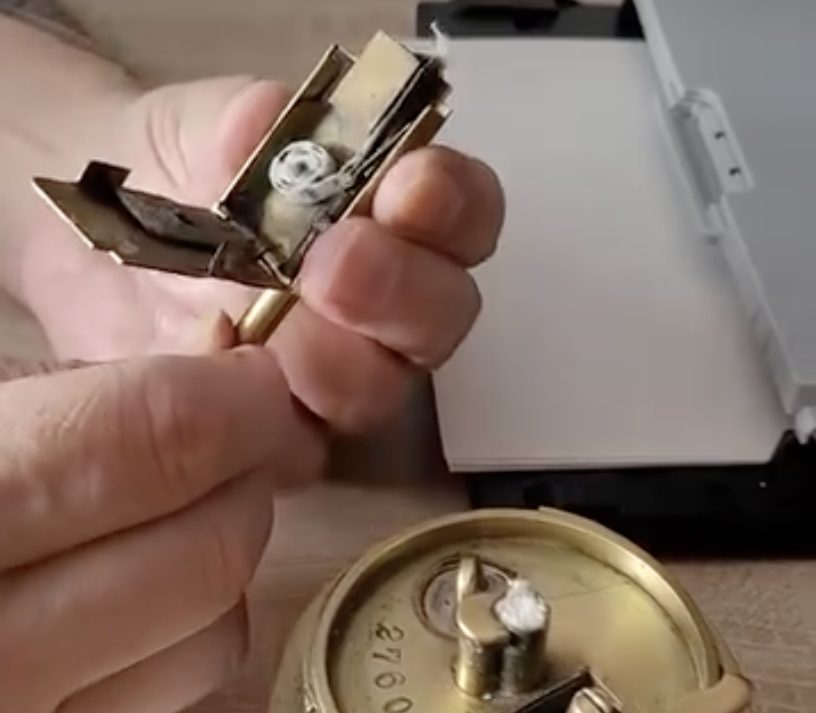Before metal spark ignition prevailed in the safety lamp, several other systems also served to ignite the lamp from the inside. A proven system, which the Wolf company used for a long time in their early petrol safety lamps, was the impact igniter. In the process, ignition pads worked into a strip of paper were ignited by a firing pin, which was able to build up spring pressure thanks to a special mechanism. I remember owning a toy gun as a kid that used a similar technique to simulate a bang.
In the 1890s, the Wolf company increasingly used the so-called rub strip igniter. A coiled strip was placed in the igniter case. This strip was lined with an ignitable material and treated with paraffin. With a bolt that was moved up and down, each stroke moved the strip a little further. At the end of the bolt was a metal tongue with several small ripping hooks. These hooks ruptured the surface of the strip with each stroke, creating an ignition spark.
Due to the networking of the Wolf company in other countries, this type of ignition was also used in safety lamps from other well-known manufacturers, such as Hubert Joris (Belgium) or Arras (France). This friction strip igniter was also installed in many safety lamps that the Wolf company built for the American market up to the First World War.
Of course, other manufacturers of safety lamps have also developed ignition systems that work on a similar principle. The companies “Wilhelm Seippel” and “Grümer & Grimberg” used friction strip igniters that were arranged horizontally and not vertically, as was the case with “Wolf”.
At this point, it should be pointed out that the ignition strips of the two systems described here are completely different and can only be used for their individual systems.
